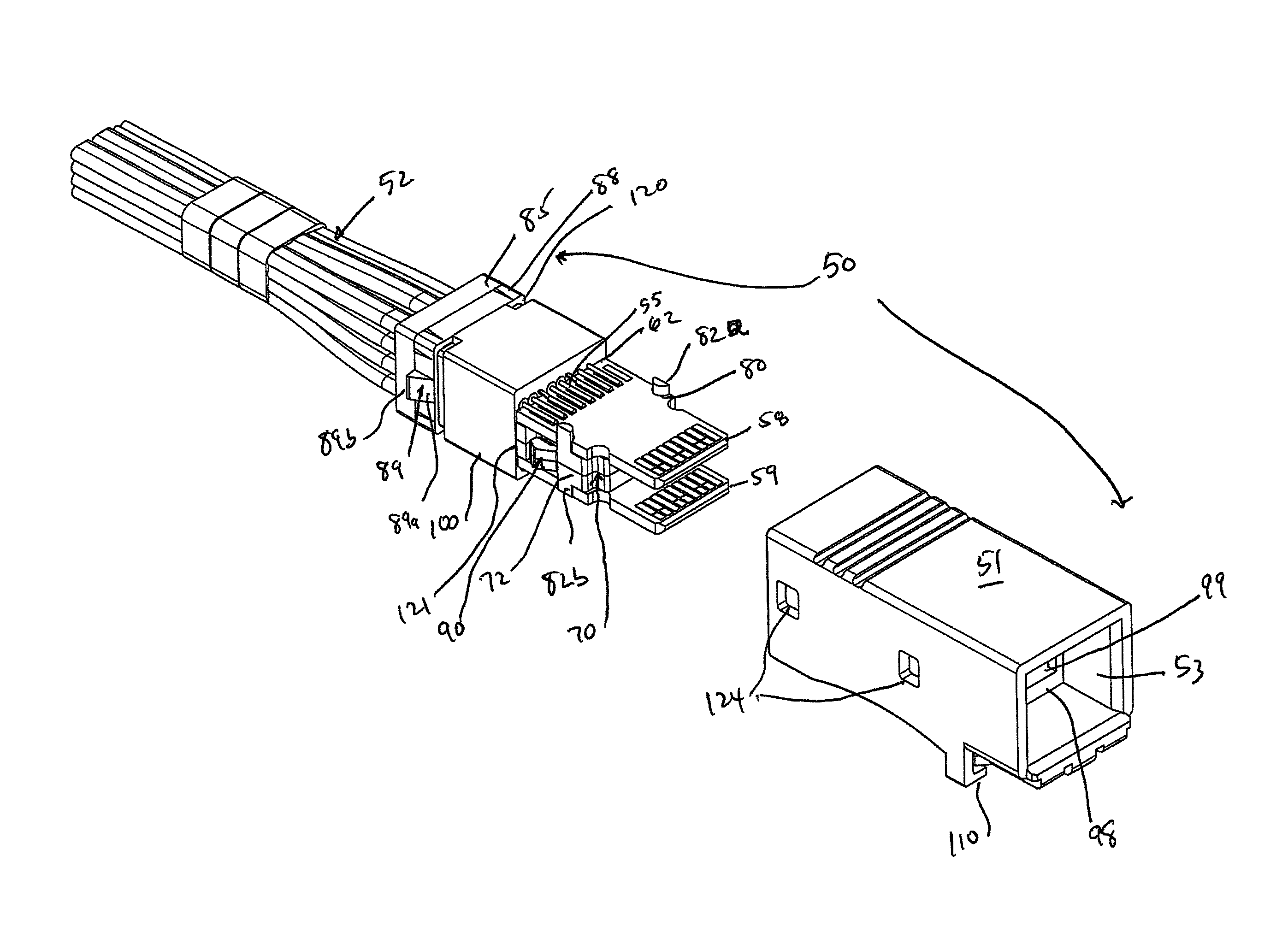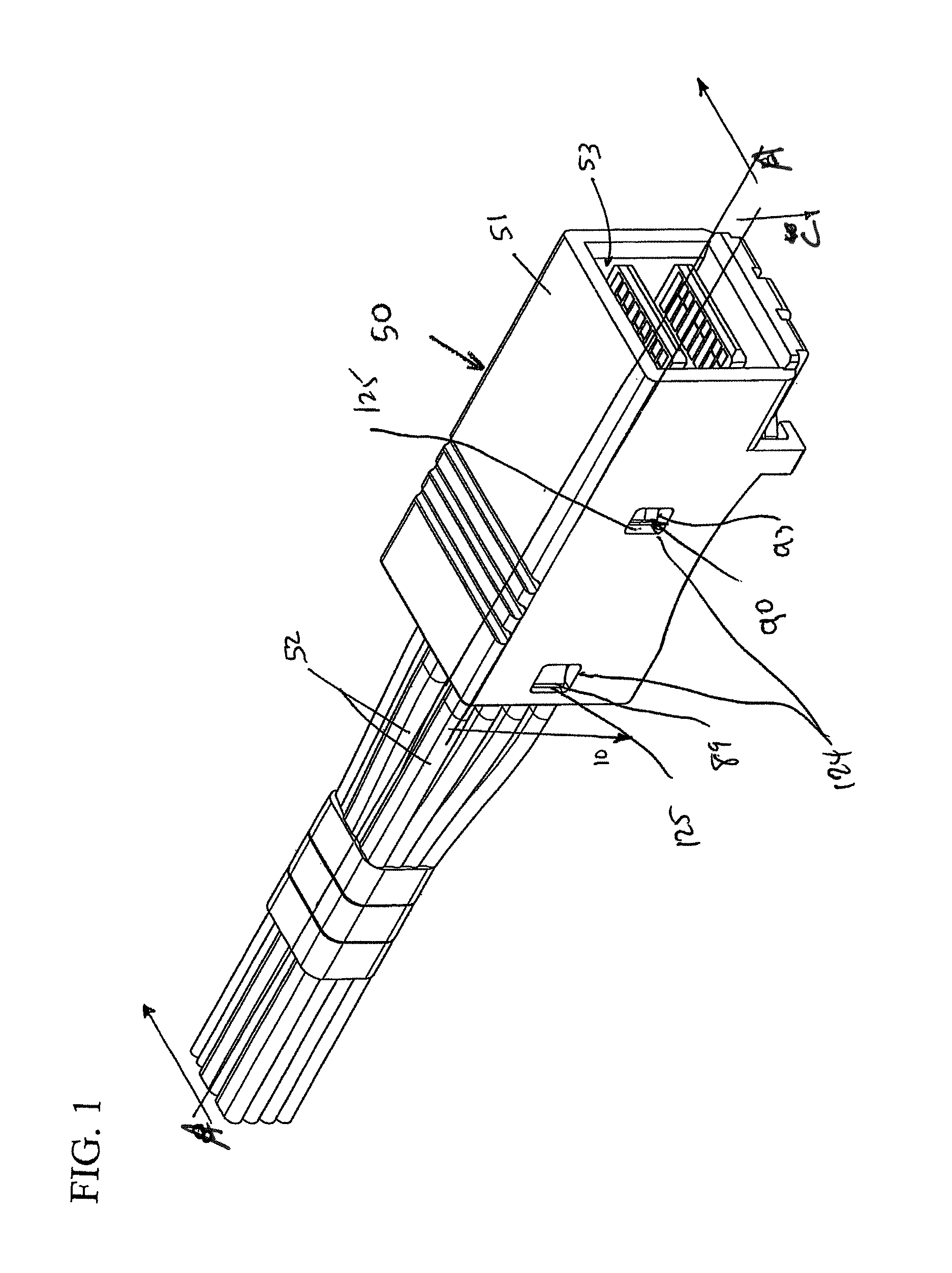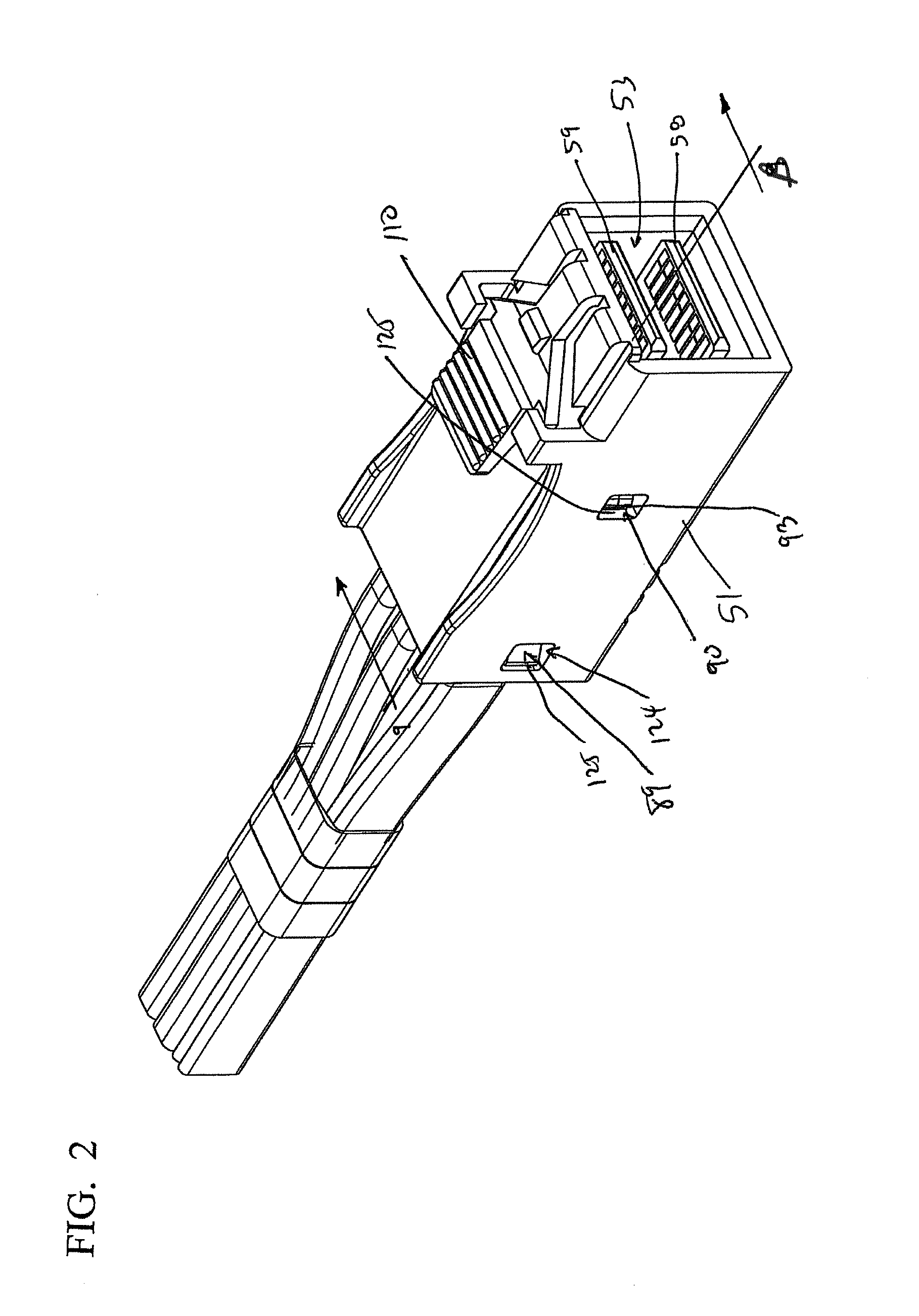Plug connector with improved construction
a plug connector and construction technology, applied in the direction of fixed connections, coupling device details, coupling device connections, etc., can solve the problems of non-unitary structure, noise rises to a level where it becomes an issue, and the impedance dip may be detrimental to the operation of the connector, so as to achieve the effect of improving the impedance profile and maintaining a robust structur
- Summary
- Abstract
- Description
- Claims
- Application Information
AI Technical Summary
Benefits of technology
Problems solved by technology
Method used
Image
Examples
Embodiment Construction
[0038]FIG. 1 illustrates a plug connector 50 constructed in accordance with the following detailed disclosure. The connector 50 is a plug style connector that is used to electrically connect a plurality of multi-wire cables 52, each containing multiple wires 54 with associated conductors 55. Some of the cables contain pairs of wires which are used to transmit differential signals across the wire pairs. As such, the cables 52 are referred to in the art as “twinax” cables that are used to transmit differential signals, and each such wire pair includes an associated ground, or drain wire 56. The wires 54 of the cable 52 are terminated to printed circuit boards 58, 59 that are elongated in nature and have a general rectangular configuration. Such printed circuit boards are known in the art as “paddle cards” and each such board has opposing leading and trailing edges, or ends 60, 62. The connector 50 includes an elongated hollow connector housing 51 with a hollow passage 53 extending the...
PUM
 Login to View More
Login to View More Abstract
Description
Claims
Application Information
 Login to View More
Login to View More - R&D
- Intellectual Property
- Life Sciences
- Materials
- Tech Scout
- Unparalleled Data Quality
- Higher Quality Content
- 60% Fewer Hallucinations
Browse by: Latest US Patents, China's latest patents, Technical Efficacy Thesaurus, Application Domain, Technology Topic, Popular Technical Reports.
© 2025 PatSnap. All rights reserved.Legal|Privacy policy|Modern Slavery Act Transparency Statement|Sitemap|About US| Contact US: help@patsnap.com



